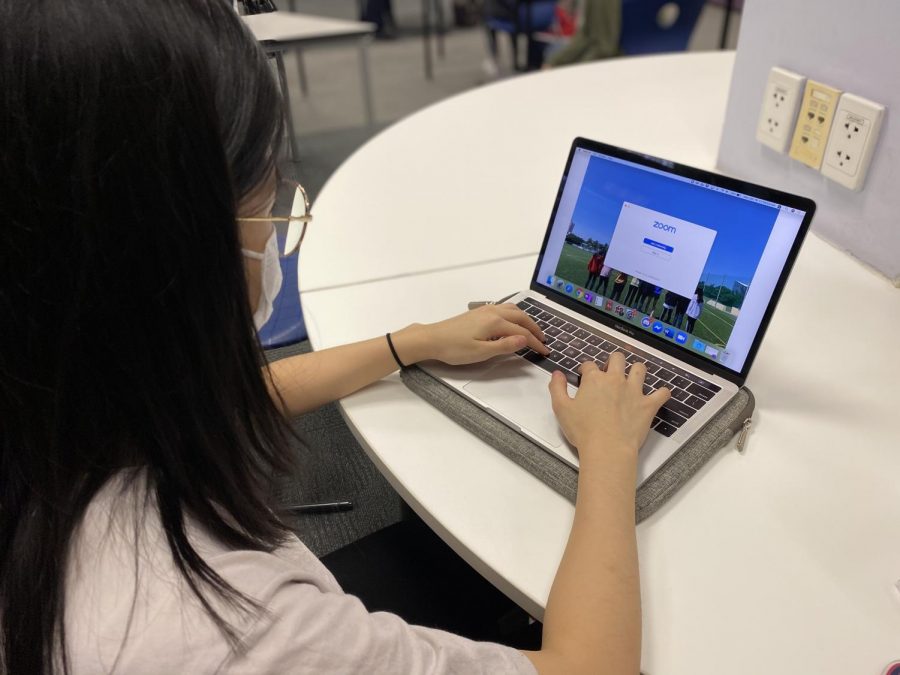Bridging the Distance: the Bridge Program
A student joins a Zoom call
UNIS created the Bridge Program this year to give UNIS students who could not return to school due to travel restrictions or quarantine the support that they need to be able to attend school online as COVID-19 continues to have a significant impact on the world.
The Bridge Program shares many similarities with last year’s distance learning in terms of the way students are able to find their work on Veracross. However, with this program, students are provided more support. “In the counseling side we try to help students check in with their stress levels, their time management, and see how they’re progressing.” said HS counselor Franko Cifizzari.
Even though the situation regarding the pandemic has been rather stable in Vietnam, it is difficult for those outside the country to enter Vietnam as the government has put in place strict regulations on the ability of people to enter the country. For this reason, making school from home accessible and easy was an important priority to the administration.
While the Bridge Program may seem like a burden to some, Cifizzari believes that it has helped students develop resilience. “We talk about resilience a lot in life, and we talk about building resilience and I think the students, certainly the high school, secondary students given their experiences in the last year have built an incredible amount of resilience” Cifizzari said.
Tazca Levitt, a new Grade 11 student who started this school year over the Bridge Program, found that while distance learning was challenging for her, it also gave her an opportunity to improve her time management skills. “There were periods where I couldn’t get myself to do the work,” Levitt said. “I thrive in a competitive environment, where the people around me are all working together to achieve a common goal; but being alone in a room learning was increasingly difficult as time went on”.
Cifizzari also mentioned the fact that even though certain students seemed to have struggled a lot more during distance learning, others thrived. He said that this is due to the fact that each student has a different learning style or environment in which they flourish. Going into distance learning last year was a challenge because it was difficult to predict how each student would do in this new learning environment. With the information that teachers got on student’s learning styles last year, they were able to adapt the Bridge Program to fit the needs of the few students who had to continue working from home.
Another aspect that sometimes made learning difficult was the lack of video calls due different time zones overseas. “I’d say that this is the most difficult part of learning from home,” said Levitt, who was in the US when she started learning at UNIS. “If I had been in the same time zone all along, I would have been able to go to classes, and maybe not have struggled as much with time management.” Levitt said that if she was able to join live classes, she would have been able to contribute to group discussions and actually interact with students, which she thinks would have a positive impact on her learning.
Learning on your own is a challenge, but it is important to consider the positive aspects it has on student’s learning styles. “I think we try to look for the rainbow over every struggle in life and I think the one thing that will come out of this period of our history is that so many people have learned a new set of skills to allow them to eventually be more successful in the future as they go forward,” Cifizzari said.


